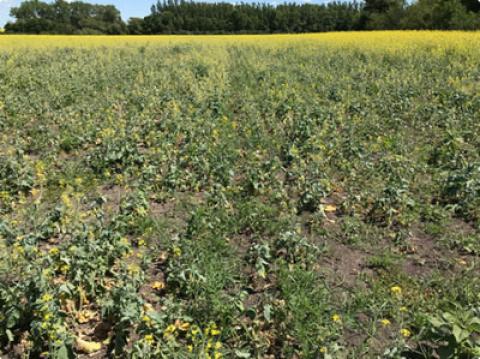The pathogen survives as robust resting spores, which can remain viable for more than a decade in the soil. In the spring, resting spores germinate to produce motile zoospores that swim through water in the soil.
Zoospores encyst on root hairs of susceptible plants and form a cell that (under a microscope) resembles an amoeba, called a plasmodium. The plasmodium invades cells and divides to become more zoospores that re-infect additional root tissue or are released into the soil and can infect neighboring plant roots.
Once infection occurs in the cortical tissue (central cell layer), the pathogen produces secondary plasmodia that cause plant cells to divide and swell, resulting in gall formation on the roots. The plasmodia eventually divide into millions of resting spores that are released back into the soil when galls rapidly disintegrate and are decayed by soil microbes.
High soil moisture, acidic soil (low pH) and temperatures around 68 to 77 F favor infection and disease severity. Poorly drained areas or parts of fields commonly flooded are more prone to infection. Although infection (and yield loss) can occur in soils at any pH, those with pH above 7.2 may have less damage.
P. brassicae is most commonly spread during its resting spore stage through infested soil that is stuck on farm equipment or other vehicles that enter infested fields. However, strong wind gusts and flooding also have been identified as capable of transferring spores. Consequently, new clubroot infestations are commonly observed first in field entrances (from soil moved on equipment), in low-lying or flood-prone areas and/or along shelter belts.
